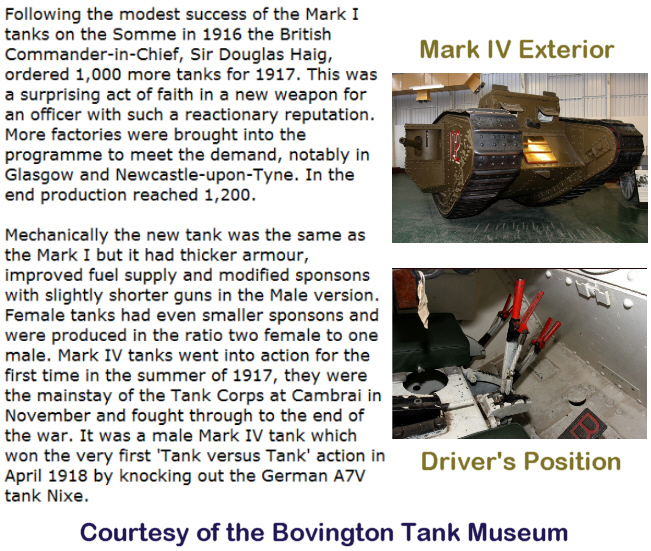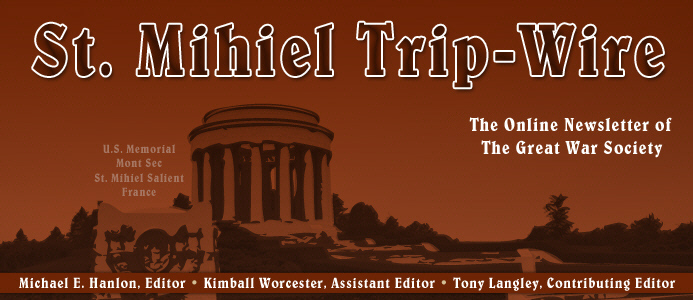

TRENCH REPORT: I think most of our readers know that I take care of the Websites of the two largest WWI history organizations in the U.S., The Great War Society and The Western Front Association-U.S. Branch. This month, in support of these groups, I would like to ask the Trip-Wire readers to help us spread the word about the next joint National Seminar of the two organizations at the National World War I Museum in Kansas City, September 10-11. At the link below you will find the program for the event. Would you please either download it or simply copy the link and send one or the other to any of your friends who might be interested in the great events of 1914-1918? Your help will be most appreciated. And I hope to see YOU in Kansas City. MH
http://www.wfa-usa.org/new/pdf/2010seminar.pdf
This Month's Internet Feature
First World War Literature
WWI Literature: General Essay
War Poets: Reading List
War Poets: Essay by James Robbins
Reading List: Best Books on the First World War by Robert Wilde, European History Guide for About.com
World War I Novels
Memoirs and Autobiographical Fiction
New at Our Own & Our Friends' Great War Websites
Click on Title or Icon to Access
|
From History Today Magazine:
At Great War Society Sites
At the WFA-USA
| Late Announcement: The WFA New York-New England chapter will have its annual seminar at the Henry Wallace Center of the Roosevelt Library in Hyde Park, New
York, November 13, 2010. |
|

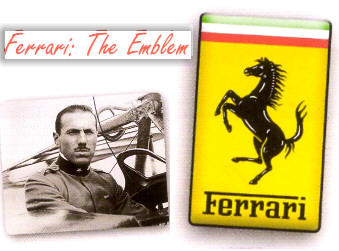
Italian veteran Enzo Ferrari liked to tell the story of how the prancing horse became his emblem.
The black horse had been painted on the fuselage of the fighter plane flown by Francesco Baracca, Italian ace of aces, killed over the Montello in 1918. After winning a race in Ravenna in 1923 Baracca's father and mother congratulated him. The aviator's mother said, "Ferrari, why don't you put my son's prancing horse on your cars? It will bring you luck." He did, and it did.
|

German Soldiers (Detail)
|
GREAT WAR 2010 EVENT CALENDAR
|
A World War I Event Calendar
We continue to add important events to our WWI Calendar. There is simply more information than we can display here on the Trip-Wire. It is available for all, however, by downloading it from our Website.
(download calendar as Word document)
|
WFA-USA & TGWS Joint Annual Seminar
September 10-11, 2010
National World War I Museum,
Kansas City, MO
(Program and News)
|
Western Front Association
U.S. Branch Chapter Meetings
Check for Your Region
Regularly Updated (details)
|
Great War Society Monthly Chapter Meetings
Berkeley, San Francisco, and Palo Alto, CA
Regularly Updated (details)
|
Upcoming Events at the National World War I Museum
Kansas City, MO
Regularly Updated (details)
|
Send additions/corrections for our master schedule:
Email Response
|
The Memorial Museum, Passchendaele 1917, at Zonnebeke Chateau is have a museum weekend, April 24-25, 2010, roughly corresponding to Anzac Day. This year, three themes will highlighted: living history (historical evocation 1914-1918), the Commonwealth War Graves Commission (new exposition theme) and
Anzac-Day. (link)
Henry Moore (World War I Vet) Exhibit Opens at London's Tate
(link)

We of this generation, are too near the Great War to write its history. Time alone can give perspective and then only to the historian and his readers. It alone can assign to past events their relative importance. This generation in the United States is living and has lived amidst such a succession of great events that it has ceased to be greatly impressed by them. Among our people the war is largely forgotten, or remembered because of some personal consequence or some prospective personal consequence. Yet an elemental convulsion of humanity has occurred, so profound in its effects upon life on the earth that it will be studied and described for thousands of years.
Charles Dawes, Bg. Gen., AEF, Vice-President of the United States, 1925-29
A Journal of the Great War, 1929
|
|
|
|
|
Page Two
|
|
|
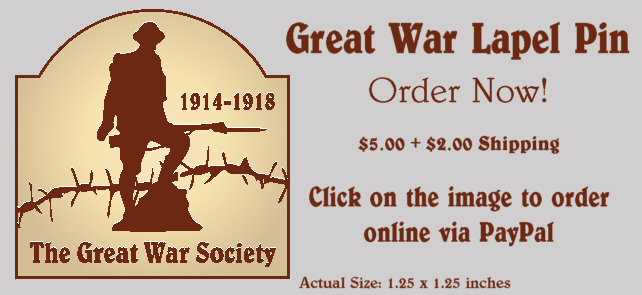 |
|
|
World War I Headlines
in the
21st Century
|
|

The Work of French Illustrator Georges Scott
|
|
Subscribe to Our Online Magazine
|
|

|
|
|
Page Three
|
|
|
Gone West
John Babcock, Canada's last known veteran of the First World War, was remembered at a memorial service on February 27, 2010.
(Article and Photo)
|
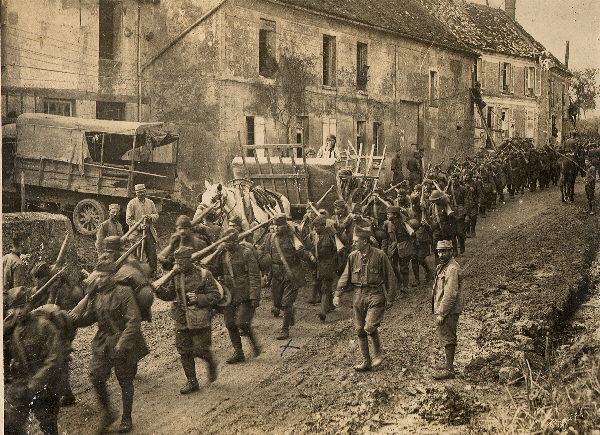
Elements of the 27th New York Division, AEF, Heading for the Front, Somme Sector
|
 |
From the Bruccoli Collection at the University of Virginia
England's Saints, 1914-1917
|
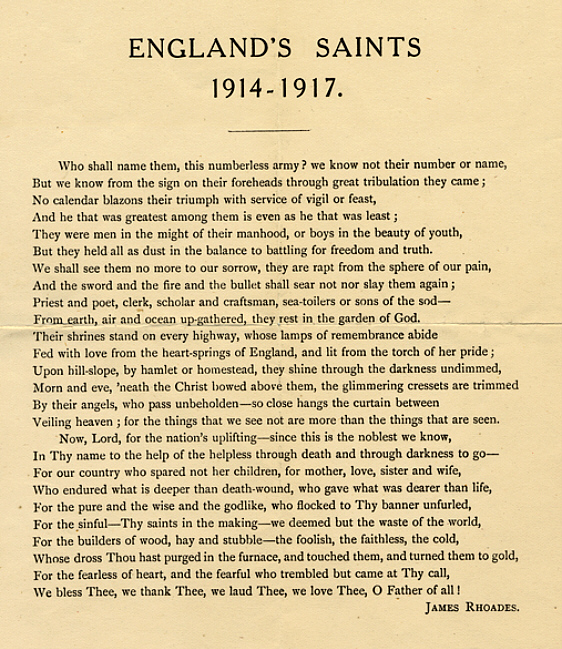
James Rhoades (1841-1923) was an English mystic and poet
|
|
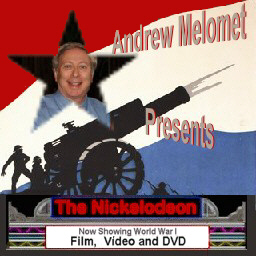 |
From the Archives --
Halifax: December 6, 1917
by Andrew Melomet
|
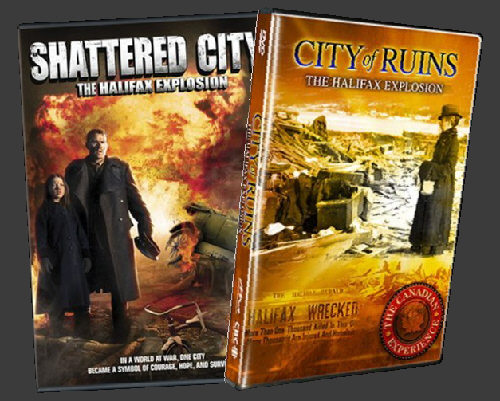
Prior to the development and use of atomic weapons, the greatest manmade (although unintentional) explosion probably occurred December 6, 1917, just over ninety-two years ago this month in the City of Halifax, Nova Scotia, Canada. Halifax is the closest mainland port to Europe and was a home port for the Royal Navy until 1905. After that it served as a port for the Royal Canadian Navy. A large natural harbor and ice-free in winter, its strategic importance was of great value during World War One with convoys being assembled with Allied ships from the eastern seaboard destined for the United Kingdom and war-torn Europe.
On December 6th, 1917, a French cargo ship, the Mont-Blanc, carrying wet and dry picric acid, gun cotton, TNT, and drums of benzol, collided with the Imo, a Belgian relief ship in "The Narrows" shipping channel in the port of Halifax. After the collision, the Mont-Blanc drifted close to shore. The fire caused by the collision and the exploding barrels of benzol shooting into the air drew fire fighters and a crowd of onlookers down to the docks. Other curious inhabitants watched from roofs and windows.
Shortly after 9 a.m., the Mont-Blanc exploded with the force of approximately 3 kilotons of TNT, the equivalent of a tactical nuclear weapon. The force of the blast caused a tsunami that swept over the crowd and carried their bodies into the water. The blast effect destroyed buildings, toppled chimneys, blew in doors and shattered windows throughout the city. Ships were tossed on shore. Trees were snapped. The anchor shaft of the Mont-Blanc was hurled 2 ¾ miles into the air, crashing to ground on a farm on the outskirts of the city. The blast was heard in North Cape Breton, 225 miles to the east.
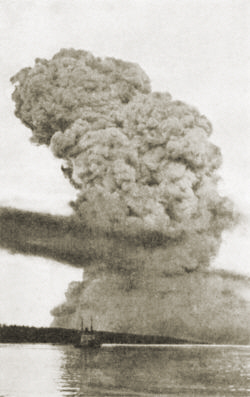
Halifax Harbor
6 December 1917 |
The fires started by overturned ovens and furnaces were fueled by stockpiled winter fuel supplies. Many initial survivors trapped in the rubble were burned to death. The following day a blizzard buried the city in snow. Victims still trapped were buried by the snowstorm. The last of the survivors were found six days after the initial explosion. Corpses were discovered for nearly a year afterwards. The approximate casualty estimate is 2,000 killed and 9,000 wounded and blinded. More Nova Scotians died in the Halifax explosion than were killed in World War One. Out of 60,000 inhabitants, 25,000 were left homeless. So many people suffered eye injuries that the science of treating damaged eyes was advanced significantly by the newly established Canadian National Institute for the Blind. Halifax would become known as a center for caring for the blind.
Relief efforts started almost immediately from nearby towns. Medical personnel from ships in the harbor came ashore. Even before the total magnitude of the disaster was known, relief was on the way from the rest of Canada and from the United States. The first American medical relief train from Massachusetts arrived on December 8. The first relief ship from the rival port of Boston arrived in Halifax on December 12 with clothing, food, window glass, and other materials. Trained glaziers came to install the new panes. A second American ship with a valuable cargo of ten trucks arrived on the 13th. Eventually aid was received from all over Canada, the United States, and the United Kingdom. Even Australia and New Zealand sent contributions. Since 1971 the Province of Nova Scotia has sent an annual Christmas tree to the city of Boston as a symbol of appreciation for the relief received from Massachusetts.
In 2003 the Canadian Broadcasting Corporation produced two programs covering the Halifax Explosion. Both are available on DVD from Morningstar Entertainment in Canada, which is where I obtained my copies. Shattered City: The Halifax Explosion is available from RHI Entertainment in the United States. City of Ruins: The Halifax Explosion is a well-done 45-minute documentary directed by Alan Mendelsohn and written and produced by Sally Reardon and Mendelsohn. It incorporates archival newsreel footage and photographs and special effects footage from the Shattered City: The Halifax Explosion mini-series. City of Ruins also includes two CBC-TV featurettes. Explosion Sites Today has Jim Simpson leading a walking tour of Halifax harbor, discussing the tragedy and pointing out the still-existing material evidence of the explosion. The second featurette, Explosion Survivors, is an emotional July 2003 visit of childhood survivors to Halifax. They tell the same stories as they have over the decades to so many, and still the trauma of the events rises to the surface.
Shattered City: The Halifax Explosion is less successful in its depiction of the disaster and its aftermath due to the historical distortions and inaccuracies it contains. Produced by Heather Haldane and Jenipher Ritchie, written by Keith Ross Leckie and directed by Bruce Pittman, Shattered City has excellent production values. The special effects and CGI sequences are very well done and much better looking than the CGI in the Canadian-produced mini-series Above And Beyond mini-series (see review in the April 2007 issue of the St. Mihiel Trip-Wire). The historical settings, production design and costumes all seem appropriate to the period.

Aftermath I
The story line follows members of a fictitious Halifax family, the Collinses, and their experiences before, during, and after the disaster. The acting is overall of the high quality I've come to associate with modern Canadian productions. Vincent Walsh as war-weary Captain Charlie Collins gives an excellent portrayal of a man who has seen too much of war and finds his home town leave turned into an experience as terrible as anything he has experienced on the Western Front. Shauna MacDonald, better known to Canadian audiences for her ensemble television comedy work, is Boston doctor Barbara Paxton, who manages to fall in love with Captain Collins amidst the ruins of Halifax. One of the advantages of watching a CBC-TV production is being introduced to unfamiliar actors who give excellent performances. Two familiar faces are Graham Greene as Elijah Cobb, who gives important testimony in the criminal manslaughter trial and Pete Postlethwaite as attorney Charles Burchell.
Unfortunately, the script has some major errors. First, it has a German spy ring planning sabotage on the Mont-Blanc with prior knowledge of its arrival in Halifax. There were no German spies in Halifax. Second, it presents a post-disaster criminal manslaughter trial riddled with conspiracy and government intervention. This trial appears to be based on a Naval Inquiry, an actual criminal manslaughter trial, and a civil court case that all occurred at different times. Even the outcome of the depicted trial is at variance with actual events and accused parties! Last, the mini-series depicts Halifax as without surgeons and with only two makeshift hospitals until the surgeons and medical personnel arrive from America. Actually, there were a half-dozen local hospitals functioning in addition to nearby military medical facilities.
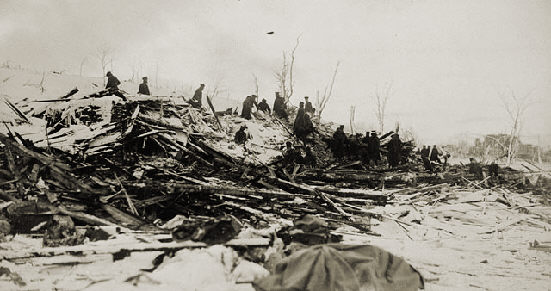
Aftermath II
The Shattered City: The Halifax Explosion DVD is widescreen but not enhanced for widescreen televisions. If your DVD player or TV has a zoom function you'll need to use it to fill a 16 x 9 set. The Dolby Digital Stereo was well produced and did the job of conveying all the explosion effects. Special features include cast and production biographies, a behind-the-scenes photo gallery, special-effects scenes, behind the scenes featurette, an interview with Executive Producer Mary Young Leckie, a glamorous life of a film extra featurette, and a CBC-TV News featurette on explosion survivors. I can certainly recommend the documentary City of Ruins: The Halifax Explosion as a worthwhile addition to your library of World War One documentaries. The mini-series Shattered City: The Halifax Explosion was certainly well produced, well acted and entertaining, but any viewer should be aware of its historical inaccuracies and distortions prior to watching.
Click here to download the 2004-2008 Index for the Nickelodeon
with Updates on Availability of Films and Videos in the U.S.
Check the Archives for 2009's reviews.
|
|
|








